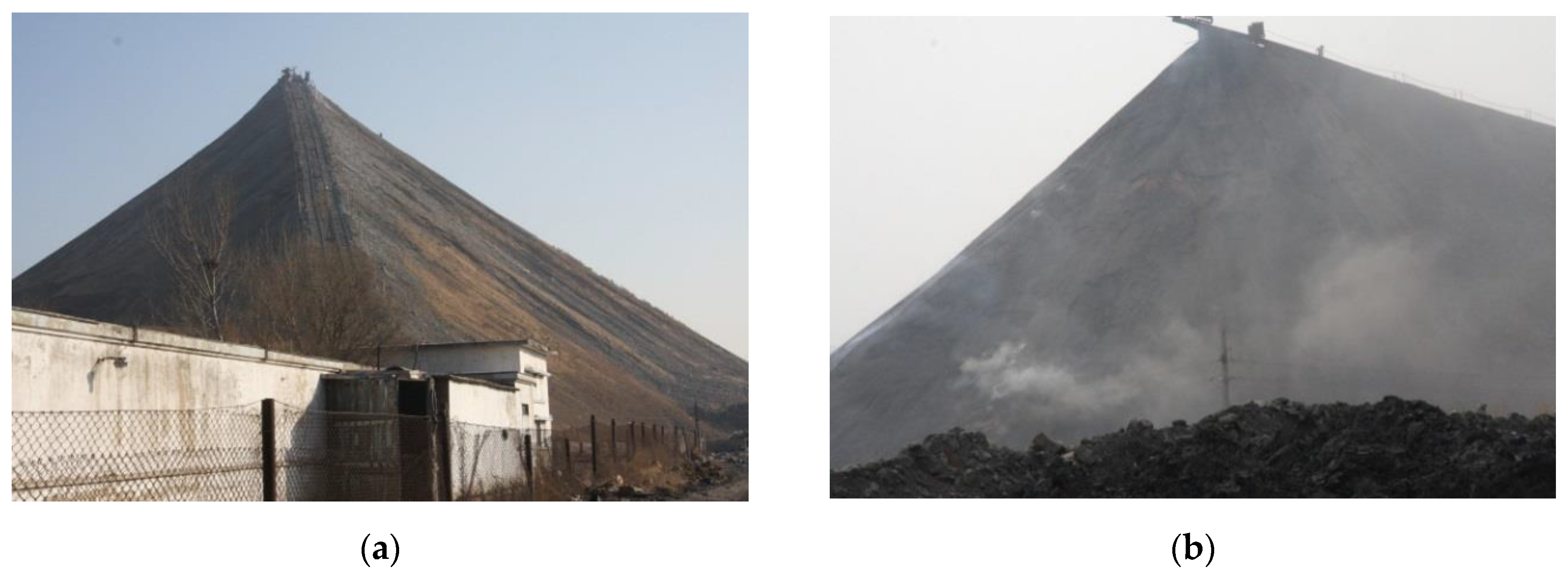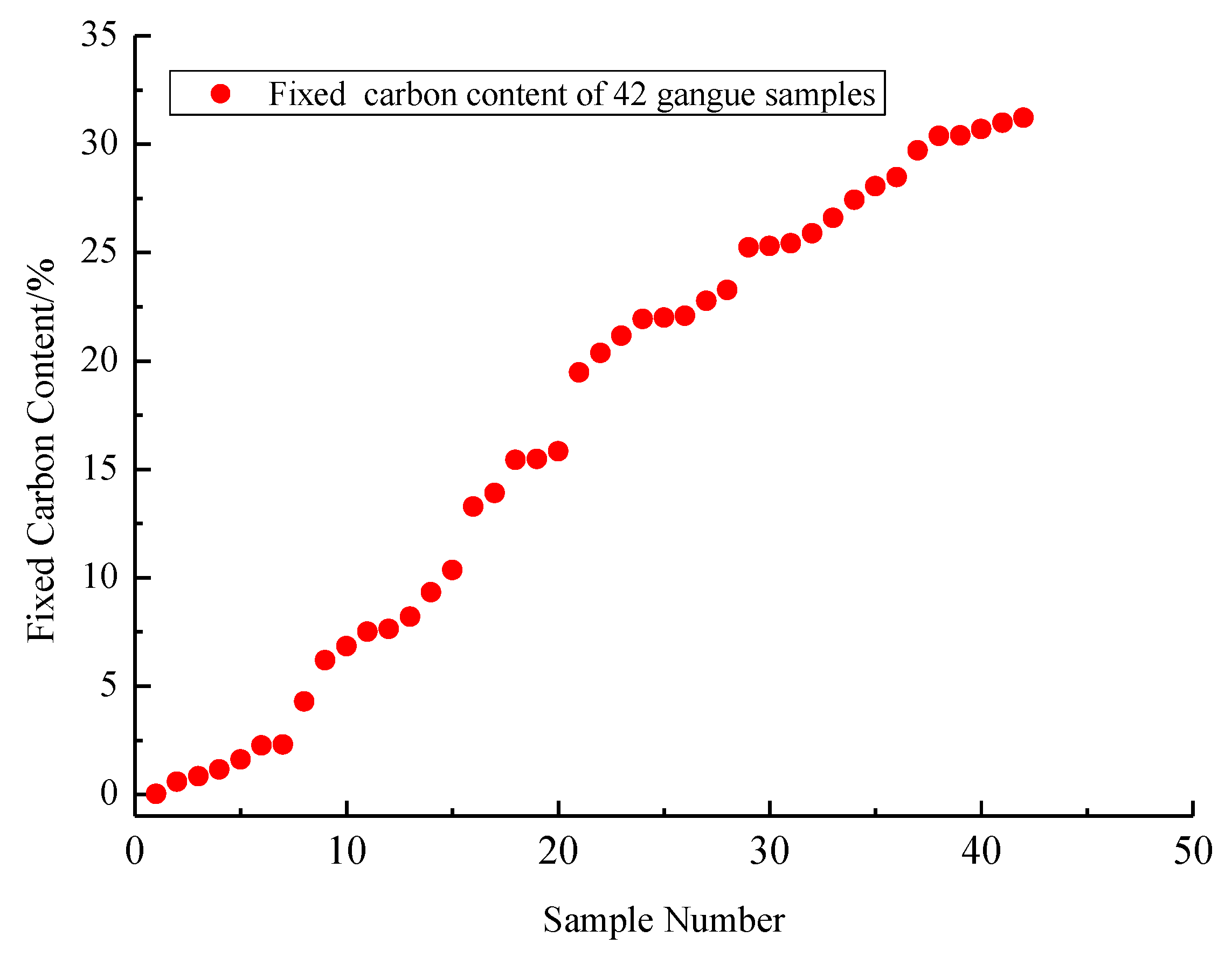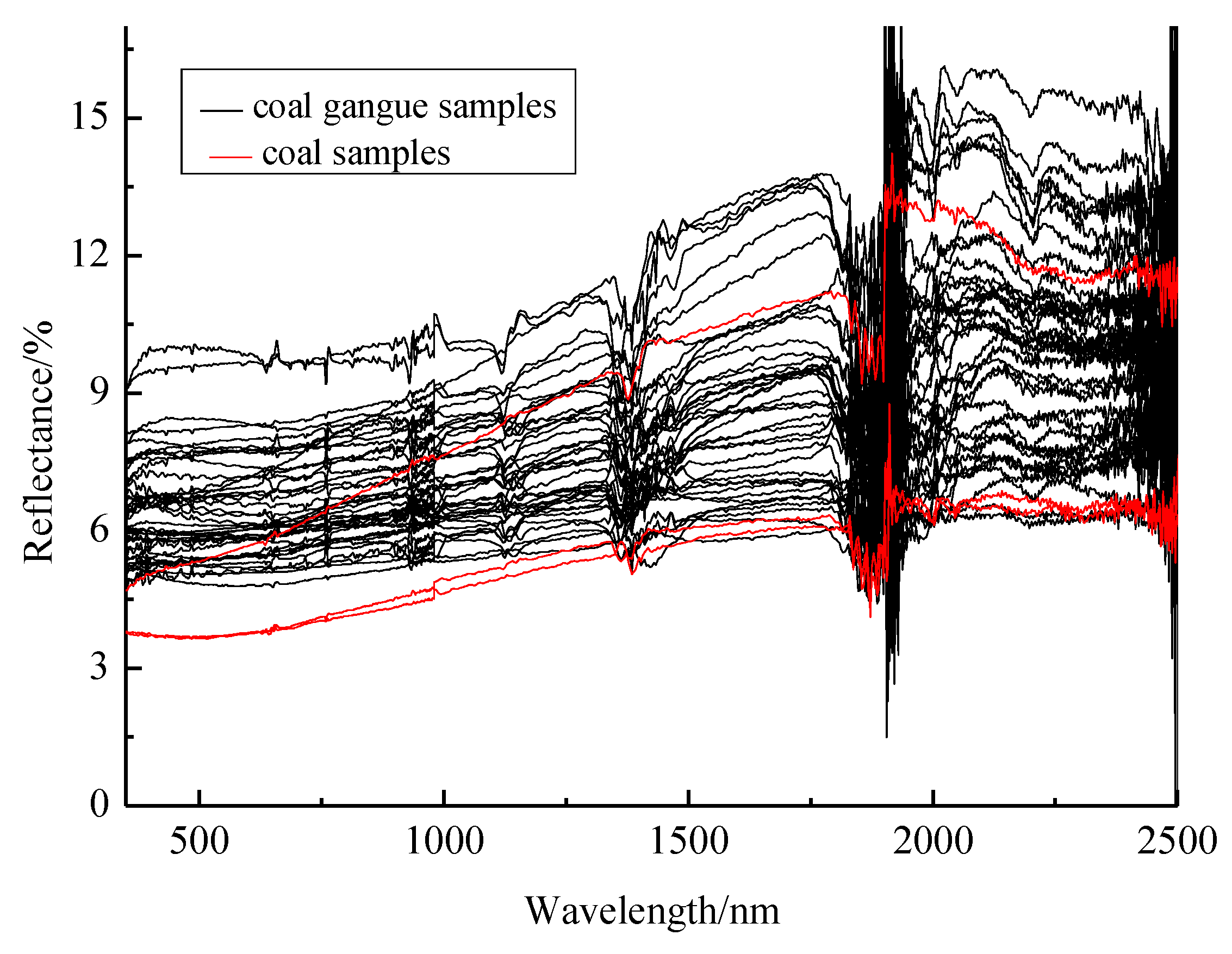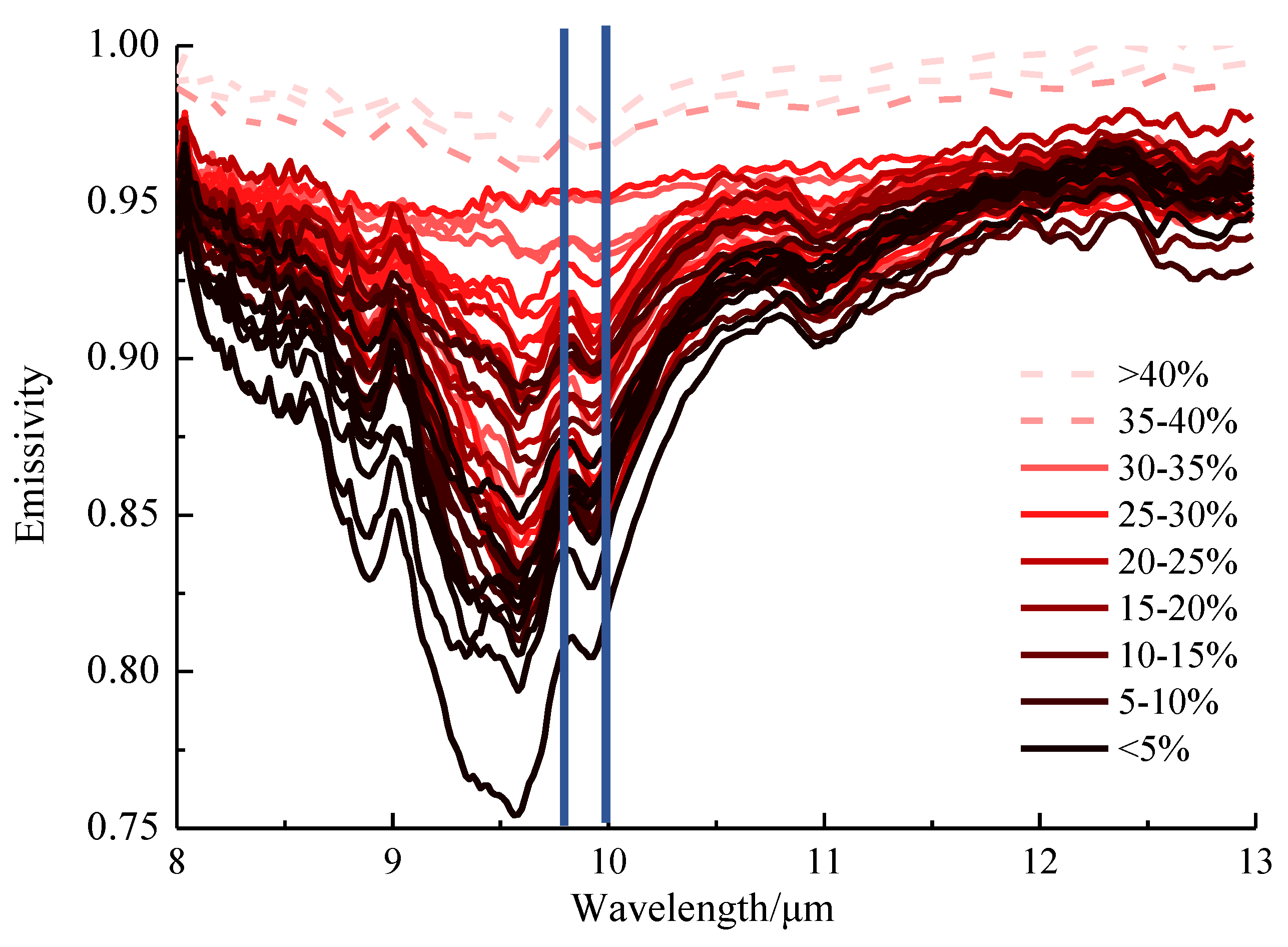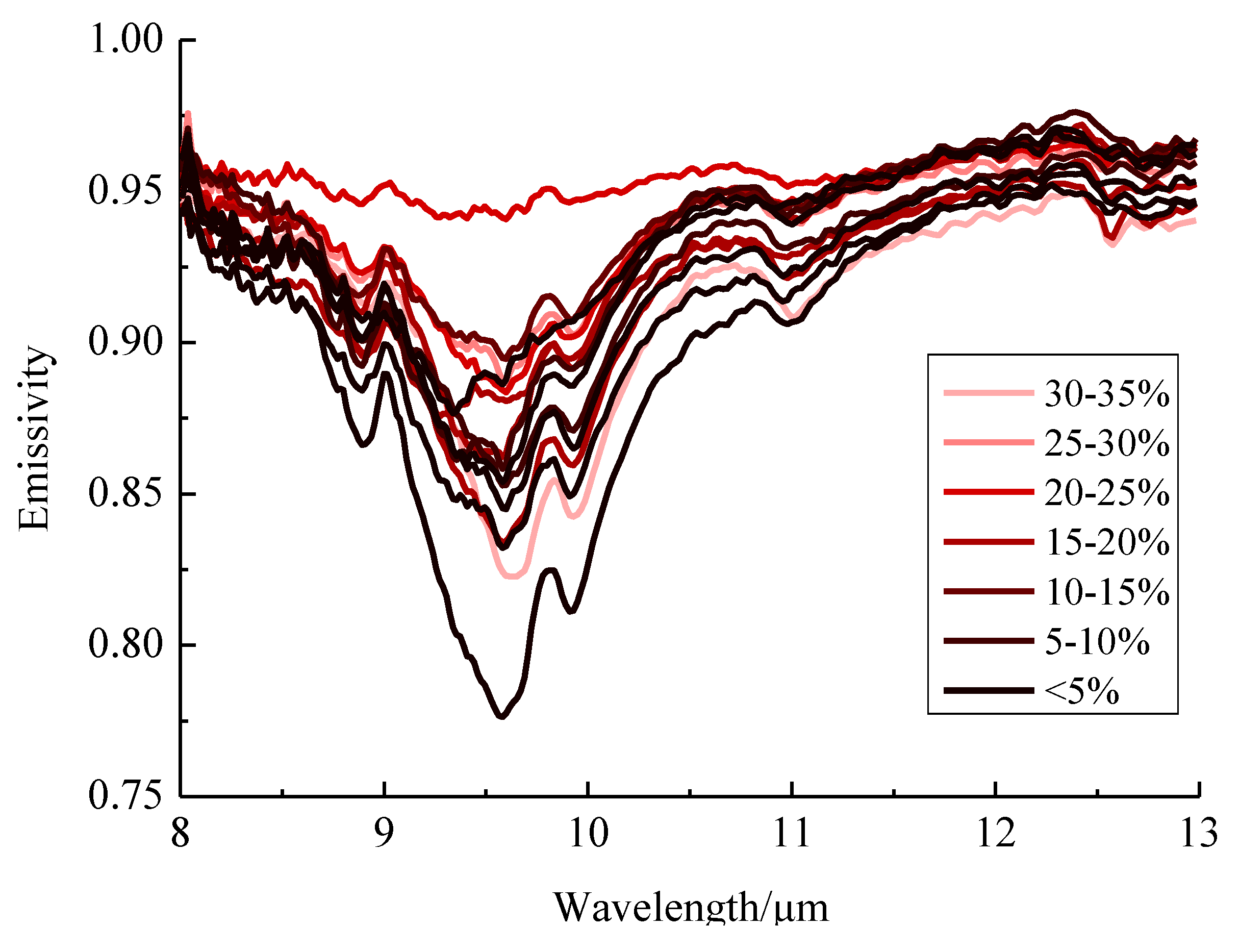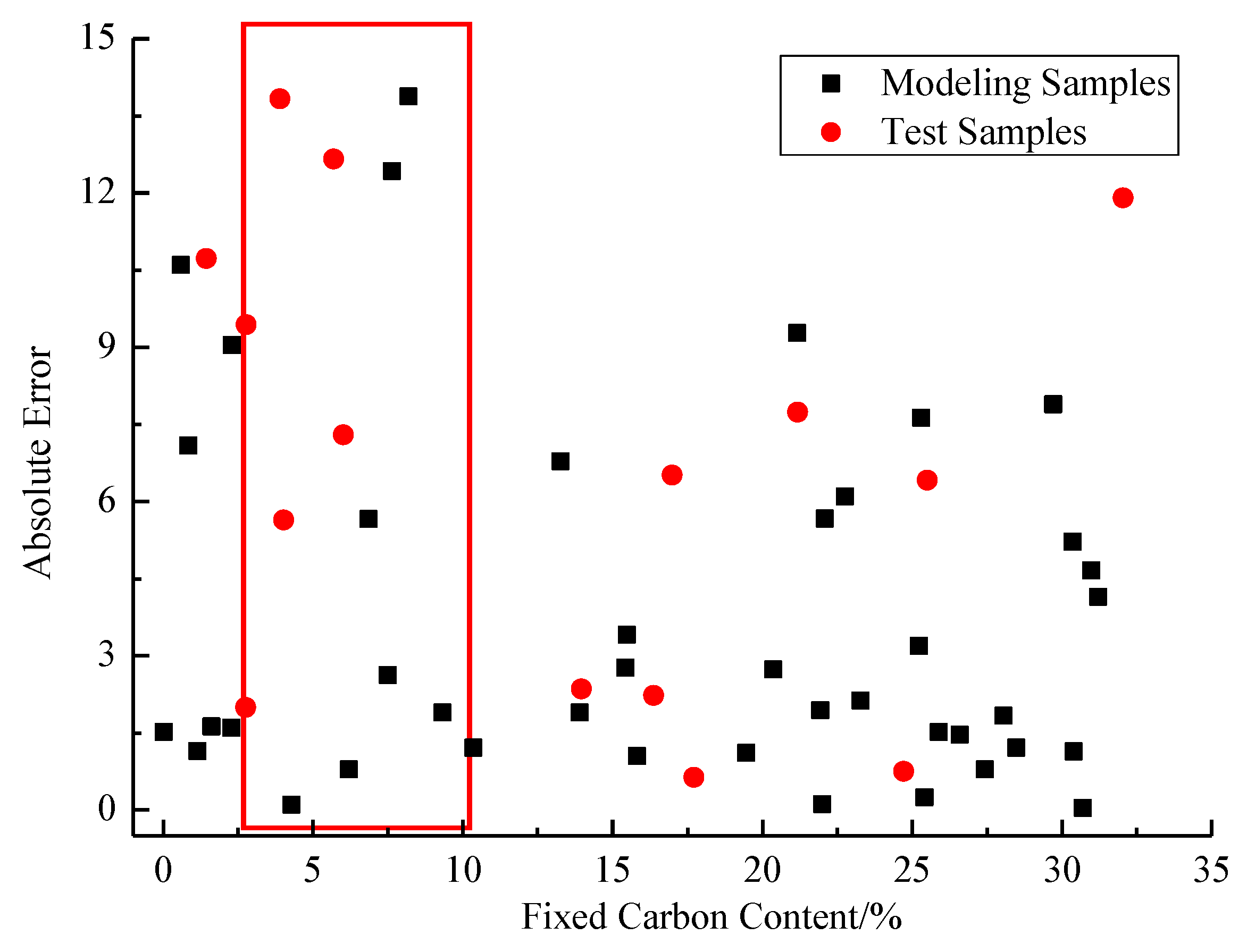1. Introduction
Gangue is the main solid waste in coal mine areas. In China, there are more than 1700 coal waste piles, totaling approximately 4.5 billion tons, with a rate of increase of 350 million tons per year [
1]. The long-term accumulation of a large amount of gangue will have a serious impact on the ecological environment of the mining area [
2,
3]. For example, after rain, harmful substances in coal gangue infiltrate and pollute soil and groundwater in the mining area. After spontaneous combustion, coal gangue will produce harmful gases, such as carbon monoxide, which will pollute the atmospheric environment of the mining area. Improper handling of gangue may cause landslides, explosions and other accidents and poses a negative impact on the safety of mining areas [
4,
5].
Carbonaceous gangue is an important part of coal gangue and has a low carbon content and certain calorific value and is flammable. Large coal gangue is located in the lower part of the coal gangue mountain, and small coal gangue is located in the upper middle part. Large gaps are observed within the large coal gangue in the lower part, and they allow for the passage of oxygen; and the small coal gangue in the middle and upper parts is weathered into granular gangue, which acts as a closed air system to prevent heat from being emitted. The spontaneous combustion of coal gangue continuously accumulates heat [
6]. Gangue with a higher carbon content corresponds to higher heat released by combustion and a greater risk of spontaneous combustion.
At present, scholars in China and abroad mainly focus on the treatment and effective use of coal gangue. In the process of discharging gangue, if the fixed carbon content in the carbon-containing gangue can be monitored promptly and accurately and then classified according to the carbon content, the possibility of spontaneous combustion of coal gangue can be greatly reduced [
7]. However, the comprehensive utilization of gangue with different carbon contents varies. For example, gangue with high carbon content can be used as fuel for generating electricity, and gangue with low carbon content is used to produce brick and other building materials [
8,
9,
10]. Thus, it is very helpful to quickly and accurately determine the fixed carbon content in coal gangue to ensure that it is effectively utilized.
At present, the traditional method for precisely determining fixed carbon is measurement by chemical tests, although these tests are time consuming and costly, which reduces their efficiency in meeting the demands of the mine. Compared to the traditional proximate analysis method, some new methods, such as the thermogravimetric (TG) [
11], the differential thermogravimetry (DTG) [
12] and differential scanning calorimetry (DSC) [
13] were developed to predict the fixed carbon content of the coal, the error between the predicted content and chemical test results was less than 1%. However, the real-time monitoring of fixed carbon content cannot be satisfied by these methods, although the predicted accuracy was relatively high.
With the development of the near-infrared spectroscopy technology, the rapid, non-contacting and nondestructive method for fixed carbon content monitoring can be realized and widely applied in a variety of samples, including coal [
14], bamboo [
15] and corn stover [
16]. For the prediction of fixed carbon content in coal, Le et al. combined the near-infrared reflectance spectroscopy and the extreme learning machine algorithm to predict the fixed carbon content in coal, the root mean square error (RMSE) of predicted content and chemical test results was 3.2570% [
17]; Kim et al. predicted the fixed carbon content on line based on the near-infrared spectroscopy is not different from that of traditional methods at 90% confidence level [
18]; Xie et al. analyzed the biochar quantitatively and the results showed that the coefficient R of the predicted result is 0.9423, and the root mean square error is 0.1074 [
19]. In addition, Yao et al. developed a rapid coal analyzer based on laser-induced breakdown spectroscopy (LIBS) and nonlinear regression method for coal samples, which can quickly and accurately predict fixed carbon content [
20].
Some coal gangues are gray and black in color similar to coal. Additionally, the visible, near-infrared spectroscopy of the two can often be mixed and difficult to distinguish [
21]. Therefore, it is difficult to accurately predict the fixed carbon content of coal gangue based on near-infrared spectroscopy.
In recent years, with the rapid development and wide application of thermal infrared spectroscopy, this method has frequently been used for the quantitative analysis of components in materials. A large number of studies on the thermal infrared spectrum of soil have been conducted to predict moisture [
22], sand content [
23], salt content [
24], organic carbon [
25] and phosphorus content [
26]. Zhang et al. established regression models of thermal infrared spectra for the CaO and SiO
2 contents in rocks by using the field thermal infrared spectra of the rock samples, thus providing a new method of identifying rock types and mineral resources [
27,
28]. Feng et al. predicted the total sulfur content of cores and cut-rock surfaces based on the thermal infrared reflectance [
29]. Another major application area of thermal infrared spectroscopy is the determination and content prediction of the surface components of the Moon and Mars [
30,
31,
32,
33,
34].
In this paper, the carbon-containing gangue samples in the Tiefa mining area are selected as the study object. First, the thermal infrared spectrum data of the samples were tested outdoors. Then, regression models on the thermal infrared spectrum and fixed carbon content were established. A new method of quantitatively inverting the fixed carbon content of carbonaceous gangue was proposed based on thermal infrared spectroscopy. The prediction results are compared with the results predicted by methods that use the spectral depth H, spectral absorption area A, random forest algorithm and support vector machine algorithm. The comparison results show that the proposed method has the best prediction effect. This new method has the advantages of being economic and efficient for determining carbon content in gangue.
4. Discussion
4.1. Mechanism Analysis
There is a linear relationship between the thermal infrared emissivity and the component content of the mixture. The spectrum of rock is composed of a linear mixture of mineral spectra of each component, and the proportion of the mineral spectra of each component in the mixed spectrum is the proportion of the mineral area to the rock surface area [
55].
The carboniferous gangue in the Tiefa mining area mainly comes from thin coal seams and carbonaceous shale in the tunneling strata. To further understand its mineral composition, five sliced gangue samples were selected and observed under a polarizing microscope. The results show that the main minerals in the gangue are carbonaceous minerals and clay minerals (kaolinite) and a small amount of quartz, potassium feldspar, albite, muscovite and biotite. The carbonaceous minerals are opaque, fine and scattered and concentrated in banded or lump-like distributions. These minerals are black and brown, which makes the whole sample appear black, thus leading to similar reflectance spectra between coal and gangue in the visible, near-infrared bands, which results in the phenomenon of “different objects with a similar spectrum”.
As the main mineral of coal gangue, carbon minerals have a thermal infrared spectrum curve close to 1, which is similar to the black body curve. Quartz, feldspar, mica and other silicate minerals have absorption characteristics at approximately 9.5 μm, which is mainly caused by Si-O bond vibration. As another major mineral of coal gangue, the thermal infrared spectrum of kaolinite has absorption characteristics at 9.5 μm and a trough characteristic at 10 μm, and the spectral features are consistent with that of the coal gangue samples.
When the content of carbonaceous minerals and kaolinite in the coal gangue samples is very high, a strong negative correlation is observed between the contents of the two minerals. Therefore, it is also feasible to predict the fixed carbon content of coal gangue based on the thermal infrared spectral characteristics of kaolinite.
4.2. Limitations
Although the overall prediction accuracy of the model is high, certain issues remain to be further addressed. The absolute error of the modeling samples and test samples has been analyzed as shown in
Figure 9.
As shown in
Figure 9, when the fixed carbon content of the sample is low (less than 10%), the prediction accuracy is poor. The main reason is that in this case, except for carbonaceous minerals and kaolinite, the contents of other mineral components are relatively large. At this time, the negative correlation between kaolinite content and carbonaceous mineral content is poor, therefore, the inversion of the fixed carbon content in coal gangue has greater errors based on the spectral characteristics of kaolinite.
We plan to introduce a deep learning algorithm to solve this problem in the next step. As a new machine learning algorithm, deep learning can better mine the effective information between data by characterizing the data and may represent a more efficient method of improving the inversion accuracy of coal gangue samples with a lower fixed carbon content. However, this method requires a large amount of sample data; therefore, we will further expand the sample size. We hope that the inversion accuracy can be improved via deep learning.
5. Conclusions
In this paper, a linear model based on the characteristics of thermal infrared spectra at the calculated sensitive bands is proposed to quantify the fixed carbon content of carbon gangue. The following conclusions are obtained:
- (1)
The thermal infrared spectral characteristics of carbonaceous gangue are obviously different from those of coal samples, and the content of fixed carbon in gangue is closely related to the trough characteristics on the emissivity curve.
- (2)
Based on the thermal infrared spectral characteristics, the difference index is strongly correlated with the fixed carbon content of the samples, and it presents a correlation coefficient of 0.8668. The linear model between the sensitive band difference index and the fixed carbon content is established.
- (3)
Compared with the model prediction results of absorption depth, spectral absorption area, and the random forest and support vector machine algorithms, the proposed inversion model of fixed carbon content based on the difference index performs the best, and presents an average error of 5.00% for all samples and a root mean square error of 6.70. The results showed that the prediction accuracy of the model is high; thus, it can be applied to the prediction of fixed carbon content in coal gangue.
Data mining methods (RF, SVM, etc.) have obvious advantages when the sample size is sufficient. However, the proposed method has higher prediction accuracy in the case of small samples. Studies to quantify the fixed carbon of coal gangue present a long experimental process is long, and high test costs; therefore, generating a large amount of data is difficult. Therefore, the proposed method has more obvious advantages in coal mine applications.
Compared with chemical methods, this method has the advantages of being economic, rapid and efficient. The study in this paper provides an online monitoring method for the fixed carbon content of coal gangue. If the thermal spectroscopy of the discharged coal gangue can be tested, then the coal gangue can be finely discharged according to the fixed carbon level and further effectively utilized. This method not only effectively reduces the possibility of spontaneous combustion of coal gangue but also creates better economic benefits. These results are important to the environmental protection and safety of mines.
